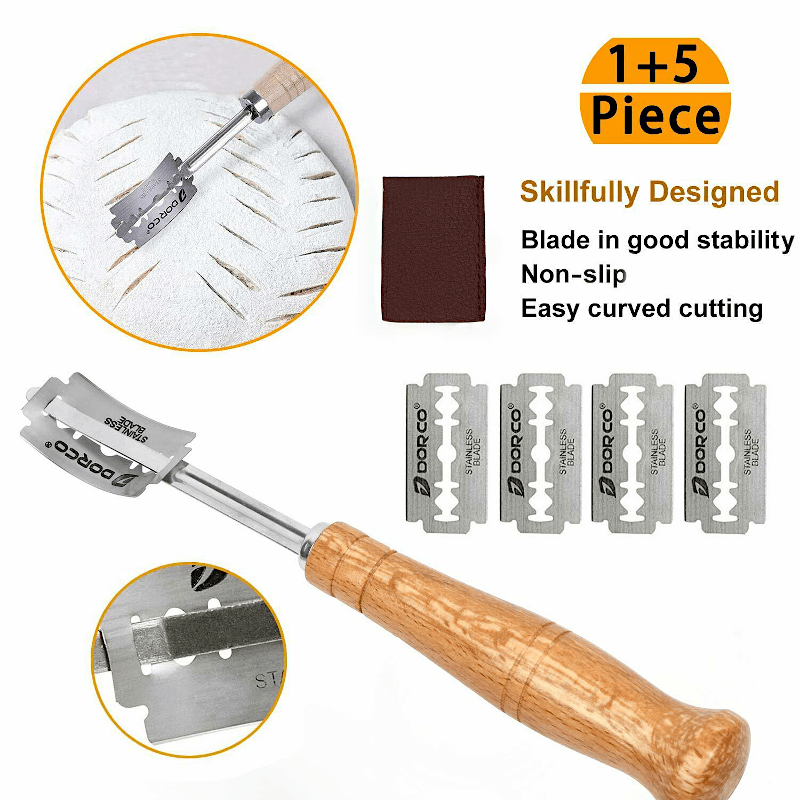

These curves should be deep enough, then follow up with minor slashes for each quarter edge but these should be done lightly and shouldn’t extend to the center. Make a straight cut from the top and a similar one crossing in the middle at 90 degrees. Cross Design If you are in a hurry, then this is the most straightforward design to implement when baking a circular bread. You can then score any design on the head ‘flat box top’ as long as they are not too deep. Make a perimeter box slashing on the top of your dough using a square box around the edges. Box Top Design This is probably the most expressive design as it allows you to play around with your creativity.
#PREMIUM BREAD LAME CRACKED#
This results in peeled back ears after baking, and the loaf will open up nicely without a cracked crust. It involves making two diagonal slashes using a curved blade while ensuring that the two slicing don’t overlap. It is also highly recommended for whole wheat recipe which doesn’t spring up high when baked. There are 4 main scoring designs depending on the variety of bread: Batard Double Slash As the name suggests, this style is best recommended for the oval batard loaf. Keep in mind that swift and controlled movements with a lame will yield the straightest dough cuts that are also decorative. The cut should however not extend deep into the dough as it would compromise the structural integrity of the bread during baking. A network of gluten strands forms this layer during shaping.
#PREMIUM BREAD LAME HOW TO#
How To Create Amazing Designs The secret to fantastic scoring designs lies in cutting deep enough to get through the skin of the dough. Some of the everyday kitchen utensils that you can use to score include: feather blades, kitchen scissors, and knives.

In case you don’t have any of these lying around you can improvise, as long as the tool you settle on is sharp and thin enough to score on the dough.


Most bakers prefer curved lames while others would rather work with straight blade lames. In reality, the only limitation is the type of bread being baked and the tools available. How Do Bakers Score Bread? There’s no limit in the number of scoring techniques that a baker can use. However, the main aim of all this is to increase the bread’s aesthetics and to provide room for expansion during baking. Each baker has their unique style, and each type of bread has its recommended scoring technique. To get a better understanding, we will break it down into the following subtopics: Why Do Bakers Score Bread? Bread scoring is probably the most intricate art in artisan baking. This stage involves scoring which requires intricate attention to details. Today we will be focusing on what happens after you have prepared the dough (proofed and dusted) all the way to the point when you start baking. The success of your loaf design cannot be attributed to a single process instead, it’s the culmination of each stage that influences the final outcome. As a result, the slice is much smoother as the dough doesn’t get dragged along. A curved lame is also easier to score with as the blade sort of curves into the dough while slicing instead of pushing into as would happen with a straight blade. During the baking process, this flap usually gets pushed back and peels back to develop the ear. To achieve this the curved blade usually forces a flap of dough to form during slicing. The curve allows you to score the dough with a pronounced ear which is the raised area of the crust. While not all lames are curved the majority of them are and for a good reason.


 0 kommentar(er)
0 kommentar(er)
